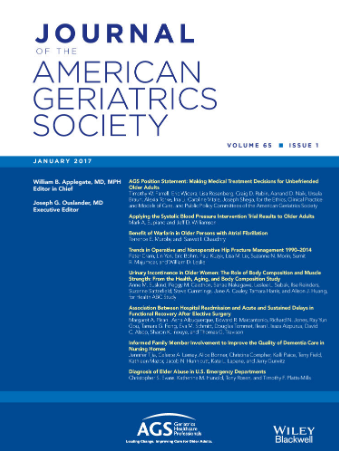Change in Fall Status of Older People With Dementia and Caregiving Difficulties: Moderation Effects of Living Arrangements
Abstract
Objectives
We aim to investigate the associations between 2-year fall status among community-dwelling older people with dementia and care partners' emotional, physical, and financial difficulties, with living arrangements (co-residence vs. separate residence) as a moderator.
Method
We used the 2015–2017 National Health and Aging Trends Study and the linked survey 2017 National Study of Caregiving (935 care partners for 567 community-dwelling older people with dementia). We employed multilevel generalized linear regression models to examine the associations of fall status between 2015 and 2017 with caregiving difficulties in 2017 for co-residing and non-co-residing care partners. We then evaluated the moderation effect of care partners' living arrangements.
Results
For co-residing care partners, high (p = 0.001), increased (p = 0.001), and decreased (p = 0.001) fall frequency over 2 years was significantly associated with emotional difficulties. For non-co-residing care partners, high (p < 0.001), increased (p = 0.001), and decreased (p = 0.002) fall frequency was significantly associated with their physical difficulties. Compared to co-residing care partners, those who lived apart experienced greater physical difficulties when the fall frequency increased over 2 years (p < 0.05), but this effect became non-significant after the Bonferroni correction. High fall frequency was significantly associated with financial difficulties for co-residing (p = 0.009) and non-co-residing (p = 0.003) care partners, and decreased fall frequency was only significantly associated with financial difficulties for non-co-residing care partners (p = 0.018). All findings for financial difficulties became non-significant after the Bonferroni correction.
Discussion
This study found differential associations between fall status over 2 years and care-related difficulties by care partners' living arrangements. Preventing falls for this population can potentially reduce the informal caregiving burden, especially the emotional difficulties for co-residing care partners and the physical difficulties of non-co-residing caregivers. Tailored interventions to manage fall risk among older people with dementia and support care partners with different living arrangements are crucial to improving their well-being.


 求助内容:
求助内容: 应助结果提醒方式:
应助结果提醒方式:


